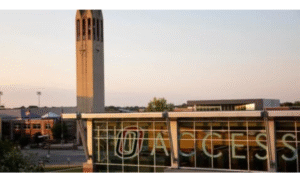The University of Nebraska Omaha (UNO) campus was plunged into panic Friday morning after a false active shooter report prompted a massive emergency response. Authorities confirmed that no shots were fired and no one was injured, but the incident caused widespread fear among students and staff.

Omaha police and campus security immediately mobilized following the alert. Officers cleared buildings, evacuated classrooms, and secured key areas on campus to ensure the safety of everyone present. The rapid response was coordinated with the university’s emergency management team.
Students and faculty described chaotic scenes as they fled classrooms and offices. “We didn’t know what was happening,” said one student. “Everyone was running, phones were blowing up, and we just wanted to find a safe place.” Despite the confusion, no injuries were reported.
The alert was first triggered when campus security received a report from a student who believed there was an active shooter in one of the campus buildings. Authorities quickly determined that the report was false, but the standard safety protocols were activated immediately to prevent any potential harm.
UNO officials emphasized that their emergency procedures worked as intended. “While this was a false alarm, we are grateful for the swift action of our students, faculty, and law enforcement,” said a university spokesperson. “Our priority is always the safety and well-being of everyone on campus.”
Omaha police conducted a thorough sweep of the campus, including classrooms, dormitories, and common areas, to confirm there was no threat. Officers also spoke with students and staff to determine how the false report originated and whether any disciplinary action would be necessary.
The incident sparked a wave of concern among parents and community members. Social media quickly filled with messages from students describing the fear and uncertainty they felt, emphasizing how quickly a false report can disrupt campus life.
UNO officials reminded the campus community of the importance of reporting concerns responsibly. The university reiterated guidelines for handling emergencies, including staying informed through official channels, following evacuation orders, and avoiding the spread of unverified information.
While no one was harmed, the event highlighted the critical need for preparedness in educational institutions. Local law enforcement praised the university’s coordination, stating that rapid response protocols saved valuable time and potentially prevented injuries.
University administrators said they would review the incident and use it as a learning opportunity. Additional safety drills and awareness campaigns are expected to be implemented to ensure students and staff are better prepared for emergencies in the future, minimizing panic and confusion during any real threats.